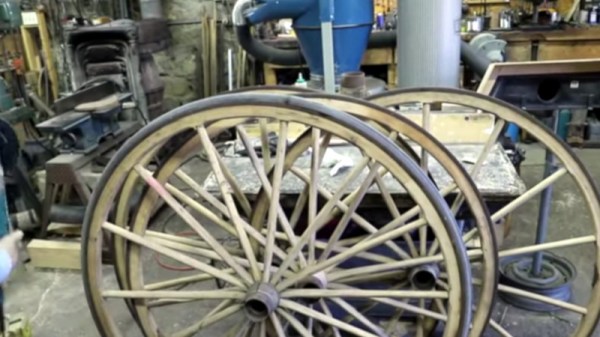Sometimes there is pleasure in watching an expert demonstrating his craft, particularly so when the craft is unusual or disappearing. A video came our way of just such a thing, and it’s of a craft so rare that it’s possible few of us will have considered it. We’re used to buying tyres for our motor vehicles that come pre-made in a mould for the size of our wheels, but how many of us have considered where the origins of the rubber tyre lie? How did a 19th-century horse-drawn buggy get its tyres? [EngelsCoachShop] take us through the process, putting rubber on a set of wooden carriage wheels.
These wheels would originally have had iron rims, that must have provided a jarring ride on cobbled roads of the day. English coach-builders of the mid 19th century were the first to fit solid rubber tyres, and it’s this type of tyre that’s being fitted in the video. Instead of the rubber ring we might expect the tyre is cut from a length of vulcanised rubber extrusion with a significant overlap, then a pair of high-tensile wires are fed through holes in the extrusion. The impressive part is the jig for creating the tyre, in which the rubber is compressed to a tight fit on the wheel before the wires are cut and their ends brazed together. Once the wheel is released from the jig the compressed tyre expands to the point at which its ends meet, making a perfect circular tyre held tightly on the rim. Few of us will ever see this for real, but we’re privileged to see it on the screen.
We may not deal with wooden wheels very often, but this isn’t the first set we’ve seen.












